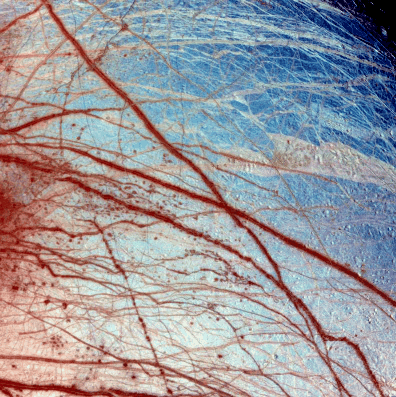Explanation: What caused the cracks in this giant ice-ball? Jupiter's moon Europa has smoothest surface in the solar system and is composed mostly of cracked water-ice. In the above false-colored picture released last week by the NASA team in charge of the Galileo mission, blue hues represent ice plains divided by dirty red and brown bands of mottled terrain. As the robot Galileo spacecraft orbits Jupiter, it sends back revealing pictures of Jupiter and its large moons including Europa, Io, Ganymede, and Callisto. The region of Europa highlighted above is known as Minos Linea. The cause for many of the cracks remains unknown but may involve shifting stresses from gravity and temperature variations. The new Galileo pictures have increased evidence that liquid oceans may indeed exist under these giant ice-sheets, a place possibly ripe for the development of life.
1999 2000 2001 2002 2003 2004 2005 2006 2007 2008 2009 2010 2011 2012 2013 2014 2015 2016 2017 2018 2019 2020 2021 2022 2023 2024 2025 |
Январь Февраль Март Апрель Май Июнь Июль Август Сентябрь Октябрь Ноябрь Декабрь |
NASA Web Site Statements, Warnings, and Disclaimers
NASA Official: Jay Norris. Specific rights apply.
A service of: LHEA at NASA / GSFC
& Michigan Tech. U.
|
Публикации с ключевыми словами:
Европа - лед - галилеевы спутники - КА Галилео - жизнь во Вселенной
Публикации со словами: Европа - лед - галилеевы спутники - КА Галилео - жизнь во Вселенной | |
См. также:
Все публикации на ту же тему >> | |
